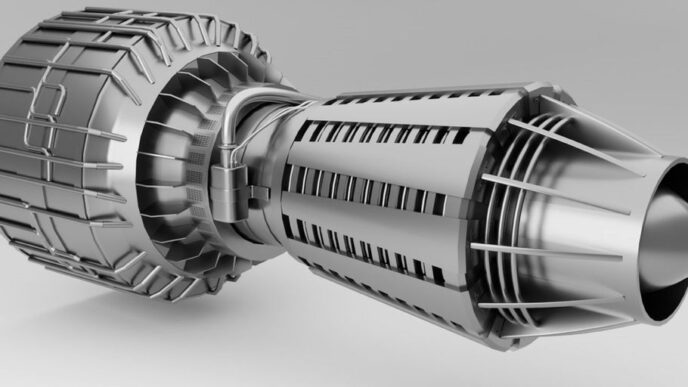While you might think the integration of electrotechnology in urban settings is a far-off reality, it’s actually at the heart of today’s city infrastructure. You’re living in an era where renewable energy sources, smart grids, and IoT networks not only exist but thrive, optimizing energy distribution and reducing carbon footprints. This isn’t just about flipping a switch and watching the lights come on; it’s about how solar and wind power, alongside smart technologies, are shaping the resilience and sustainability of our urban environments. Imagine a city that not only powers itself efficiently but also learns and adapts to the needs of its residents. Let’s explore how closer than you think these advancements are in creating smarter, greener cities.
Harnessing Renewable Energy
Harnessing renewable energy is essential for smart cities, as solar and wind power, along with biomass and hydropower, diversify and sustain urban electricity generation. Maximizing efficiency in the utilization of these renewable sources is pivotal for ensuring that you’re not just tapping into cleaner energy, but you’re doing it in the most effective way possible. Solar innovations, in particular, stand at the forefront of this technological revolution, presenting a beacon of hope for energy independence and sustainability.
Solar power, being a prominent renewable energy source, contributes markedly to the sustainable electricity generation in urban areas. The advent of cutting-edge solar innovations has dramatically increased the efficiency and feasibility of solar installations in cities. These advancements range from high-efficiency photovoltaic cells that convert sunlight into electricity more effectively, to solar thermal collectors that harness solar energy for heating purposes. The integration of these technologies within urban infrastructures not only reduces reliance on fossil fuels but also minimizes the carbon footprint of cities.
Wind energy, though not as visually dominant in urban landscapes as solar power, plays a substantial role in the renewable energy mix. The strategic placement of wind turbines in areas exposed to consistent wind flows can supplement the urban energy supply, contributing to the clean power production initiative.
Biomass and hydropower further diversify the renewable energy sources available to smart cities. By converting organic waste into energy and utilizing water bodies for power generation, these options underscore the multifaceted approach required to achieve sustainability in urban electricity generation. This holistic embrace of renewable sources underlines the shift towards a more resilient and efficient urban energy system, free from the shackles of conventional energy dependencies.
Advancing Smart Grid Technology
Smart grid technology fundamentally transforms how cities manage and distribute energy, integrating renewable sources with unparalleled efficiency. You’re living in an era where the demand for smarter, more sustainable energy solutions is at its peak, and smart grid technology is at the forefront of this revolution. By enabling efficient energy distribution and the seamless integration of renewable energy sources, smart grids aren’t just a concept but a reality that’s reshaping the energy landscape of urban environments.
Enhancing grid resilience is a critical aspect of smart grid technology. As you’re aware, traditional energy grids are susceptible to disruptions caused by natural disasters, system failures, or peak load challenges. However, smart grids, with their advanced monitoring and control capabilities, provide a robust solution. They’re designed to detect, analyze, and respond to variances in energy supply and demand in real time, ensuring a reliable energy supply even under adverse conditions.
Improving energy efficiency is another cornerstone of smart grid technology. Through demand-side management, smart grids empower you to play an active role in your energy consumption patterns. This is achieved by providing real-time data and control over your energy usage, promoting not just conservation but also a significant reduction in energy waste. Additionally, the integration of renewable energy sources becomes more viable with smart grids, facilitating a sustainable energy ecosystem that supports the growth and development of smart cities.
Integrating IoT for Efficiency
Building on the advancements in smart grid technology, integrating IoT in urban systems greatly enhances efficiency in managing and utilizing resources. You’re now part of a dynamic shift towards smarter cities, where IoT integration plays a pivotal role. This approach enables real-time monitoring of urban infrastructures, ensuring that resources are used more efficiently and sustainability goals are met with precision.
Smart sensors, a cornerstone of IoT technology, are deployed across cities. These devices collect valuable data that, when analyzed, offer insights for optimizing energy consumption and minimizing waste. Imagine a city where every watt of electricity is used where it’s needed most, thanks to the meticulous work of data analytics. This isn’t just a vision; it’s the reality of IoT-enhanced urban management.
Moreover, the impact of IoT extends beyond energy optimization. While traffic management isn’t our focus here, it’s worth noting that the same principles apply across various urban systems. Connected IoT infrastructure empowers city operators to make informed decisions, leading to better urban planning and resource allocation. These data-driven decisions are essential for developing cities that not only thrive but are also sustainable and efficient.
The seamless integration of IoT in smart cities isn’t just about technology. It’s about creating environments that promote a better quality of life. Through data analytics and energy optimization, IoT is transforming urban centers into more livable, efficient, and sustainable spaces. As a resident of such a city, you’re experiencing firsthand the freedom that comes from living in a community optimized for efficiency and sustainability.
Electrifying Public Transportation
As cities shift towards sustainability, electrifying public transportation emerges as a key strategy in reducing urban greenhouse gas emissions and enhancing air quality. By moving to electric buses and trains, urban centers aren’t only minimizing their environmental footprint but are also offering a quieter, smoother ride. This shift isn’t simply about replacing old vehicles with electric ones; it’s a holistic move towards cleaner, more efficient urban living that aligns perfectly with global efforts to combat climate change.
Electrotechnology plays a crucial role in this transformation. It enables the development of advanced charging stations that are essential for keeping electric vehicles (EVs) on the go. Imagine a network of fast-charging stations strategically placed throughout the city, ensuring that electric buses and trains are always ready to serve you without delay. This isn’t a distant future scenario; it’s a reality that’s being rolled out in smart cities around the globe.
The electrification of public transportation contributes significantly to the overall sustainability and eco-friendliness of urban areas. By adopting electric vehicles and integrating efficient charging infrastructure, cities are laying the groundwork for a cleaner, more sustainable future. This move towards electrified public transport systems is a clear indication of a city’s commitment to clean energy initiatives and its dedication to providing you with a greener, more liberating way to travel.
In essence, the adoption of electric public transportation is a critical step towards achieving urban sustainability. It not only reduces greenhouse gas emissions and air pollution but also offers a more pleasant and eco-friendly travel experience for you. As cities continue to innovate and invest in electrified public transport, they move closer to realizing the vision of truly smart, sustainable urban living.
Innovating Urban Infrastructure
Moving beyond electrifying public transportation, cities are now focusing on innovating urban infrastructure through the adoption of advanced electrotechnologies. Smart cities are at the forefront, leveraging these technologies to forge sustainable urban infrastructure that not only meets today’s needs but also anticipates tomorrow’s challenges. By harnessing the power of smart grids, IoT networks, and power electronics, these urban areas are setting new standards in enhancing urban connectivity and optimizing power consumption.
Electrotechnology empowers cities to implement advanced systems that enable efficient energy distribution and management. This innovation is critical in urban areas where the demand for energy is high and the need for efficient resource use is imperative. The integration of these technologies facilitates an infrastructure that isn’t only capable of managing current energy needs but also adaptable to future demands.
Furthermore, innovations in electrotechnology are revolutionizing data analytics, urban planning, and citizen engagement. Through precise and timely data collection and analysis, cities can make informed decisions that directly impact the quality of urban life. These technologies offer a platform for enhanced communication between city officials and residents, ensuring that the needs and desires of the community are met with responsive and adaptable solutions.
The reliance on sustainable initiatives, such as renewable energy integration and IoT applications, underscores the critical role of electrotechnology in urban development. These initiatives aren’t just about adopting new technologies; they’re about creating a connected, efficient, and sustainable urban ecosystem that promotes freedom and flexibility for its inhabitants. As cities continue to innovate their infrastructure, the adoption of advanced electrotechnologies is proving to be indispensable in achieving a smarter, more sustainable future.
Promoting Sustainable Living Practices
You’ll find that integrating renewable energy solutions such as solar and wind into urban areas greatly enhances sustainable living practices.
The implementation of smart grids facilitates more efficient energy distribution, markedly reducing the carbon footprint of cities.
Moreover, these advancements not only support environmental goals but also optimize resource use through precise energy management systems.
Renewable Energy Solutions
Renewable energy solutions, including solar, wind, biomass, and hydropower, play a pivotal role in reducing greenhouse gas emissions and fostering sustainable living practices in urban areas. By harnessing these green technologies, you’re not just contributing to a cleaner environment but also ensuring energy security and independence from volatile fossil fuel markets.
Energy storage is critical, smoothing out the variability of wind and solar power to provide a steady, reliable energy supply. This integration into the urban power grid marks a significant step towards achieving sustainability goals, driving down costs, and creating job opportunities.
You’re at the forefront of an energy revolution that promises not only to preserve our environment but also to offer unparalleled freedom in how we generate, consume, and manage energy.
Smart Grid Advantages
Harnessing the potential of smart grids greatly enhances energy efficiency and the seamless integration of renewable sources into urban power systems. By enabling efficient energy distribution and the incorporation of renewables, you’re not just consuming power; you’re actively participating in a sustainable energy revolution. With smart grids, demand-side management becomes a reality, optimizing energy usage to guarantee a reliable and sustainable supply. This isn’t just about saving energy costs; it’s about promoting conservation and sustainability practices that lead to a greener, more resilient urban environment.
Through real-time monitoring and data-driven decisions, energy optimization reaches new heights, enhancing the resilience and reliability of the energy infrastructure. You’re not just using electricity; you’re part of a smarter, more adaptable grid system. This is what it means to live in a city powered by electrotechnology, where grid resilience isn’t just a goal—it’s an achievement.
Reducing Carbon Footprint
In today’s urban landscapes, electrotechnology plays a pivotal role in shrinking cities’ carbon footprints by enabling the seamless integration of renewable energy sources.
You’ve got the power to tap into smart grids and energy management systems, driving down your carbon emissions through optimized energy distribution and consumption.
This isn’t just about being green; it’s about leveraging energy efficient lighting and aspiring towards carbon neutral buildings, setting a new standard in urban living.
Smart buildings aren’t a distant dream—they’re here, equipped with advanced automation systems that cut down on energy use and push us closer to sustainable living.
Electrotechnology isn’t just optimizing energy usage; it’s enhancing environmental sustainability and ensuring your city’s steps towards reducing its carbon footprint are both significant and impactful.
Conclusion
To sum up, electrotechnology is revolutionizing how we power our cities, making them more sustainable and efficient. By integrating renewable energy, smart grids, and IoT, we’re on the path to reducing urban carbon footprints to a large extent.
Particularly, smart grid technology alone can improve efficiency by up to 30%, showcasing the impact of these innovations. As we continue to electrify transportation and refine urban infrastructure, we’re not just powering cities; we’re transforming them into models of sustainability for the future.













